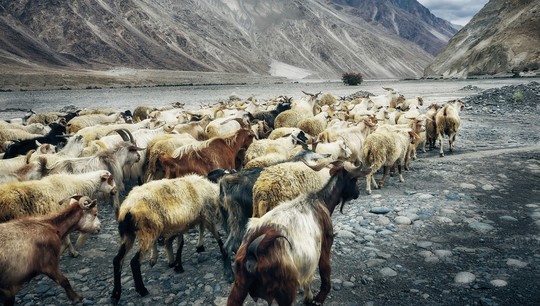Domestication of Wild Animals: A Landmark in Human History, Says Ural Federal University Expert
The image of modern civilization is directly related to the domestication of wild goats, bulls, sheep, etc. by man. The domestication of animals allowed mankind to move from the “hunter-gatherer economy” to a sedentary way of life, which, in turn, determined the course of the development of civilization as a whole. Pavel Kosintsev, leading researcher of the Laboratory of Natural Science Methods in Humanities at UrFU and a senior researcher at the Institute of Plant and Animal Ecology of the Ural Branch of the Russian Academy of Sciences, told us about this, as well as about how Soviet scientists tamed the fox and whether it is possible to domesticate the giraffe.
“Tens of thousands of years ago, man was hunting and gathering. But then, as a result of animal domestication and the emergence of crops, the Neolithic revolution took place – mankind moved from a “hunting and gathering economy” to a sedentary way of life. This process did not happen overnight and only in certain territories. However, it subsequently spread across the globe. Mankind made a qualitative leap in development and, remarkably, people had free time for the first time, as they no longer needed to spend all their time and resources on hunting,” explains Pavel Kosintsev.
The first domesticated animal was the dog, people managed to tame it back in the Stone Age about 10-15 thousand years ago. Subsequently, people domesticated cats, cows, horses, pigs and geese. Comparatively recently, in the 60-70s of the XX century, Soviet geneticists managed to domesticate the fox.
“The experiment to domesticate black-brown foxes began many years ago in Novosibirsk, in the Soviet Union. The process of domestication was gradual: for two decades researchers conducted artificial selection and finally managed to breed foxes that became domestic. Characteristically, they began to resemble dogs in appearance: their tails became hooked, spots appeared on their fur and their ears sagged,” says Pavel Kosintsev.
According to the expert, it is theoretically possible to domesticate any wild animal – even a giraffe or a penguin. The thing is that there are special genes in the animal population that are, conventionally speaking, responsible for domestication. For example, in the population of wild goats this gene is more common, and therefore their domestication was easier. In some species of animals, such as antelopes, there are few such genes, so it is extremely difficult to domesticate them.
“In the past, man has tried to domesticate many animals. In particular, ancient Egypt tried to domesticate antelopes and gazelles, but it was not successful. Existing studies have shown that domesticated and undomesticated animals differ genetically due to the presence of certain genes that make animals prone to domestication. Therefore, if we talk about the domestication of giraffes, there are individuals among them who are capable of domestication. But for this purpose, it is necessary to breed several hundreds of individuals and to carry out artificial selection, which is extremely expensive and laborious. However, it is possible,” explains Pavel Kosintsev.

